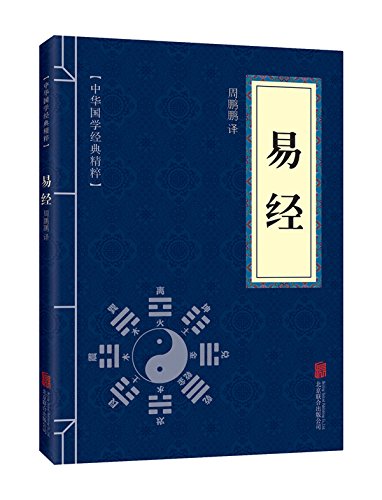WULOLIFE
《中华国学经典精粹:儒家经典必读本·易经》作者:周鹏鹏出版社:北京联合出版公司
《中华国学经典精粹:儒家经典必读本·易经》作者:周鹏鹏出版社:北京联合出版公司
Couldn't load pickup availability
Description
内容简介 · · · · · ·
在儒家经典中,《易经》被尊为“六经之首”,尊享着无比崇高的地位。而在道家经典中,《易经》也享有同于其在儒家经典中的地位,被道家奉为“三玄之冠”。真正算得上是“群经之首,大道之源”。
作为华夏文明长河中智慧与文化的结晶,经过五千年的发展,《易经》深深地影响着我们的生活。
《四库全书总目提要》对于《易经》,曾给出这样的定位:“易道广大,旁及天文、地理、乐律、兵法、算数,以逮方外之炉火皆可的影响都是世所罕见的,也从来没有一部著作能够产生如此广泛而重要的影响。
数千年来,中国的文人学士们都将《易经》作为一部值得日日、时时研读的经典,研习并遵从其中的道理。孔子说“居则观其象而玩其辞,动则观其变而玩其占”,宋人叶采也曾讲“双双瓦雀行书案,点点杨花入砚池。闲坐小窗读周易,不知春去几多时”,唐代虞世南说“不读《易》不可为将相”,医学家孙思邈说“不知《易》便不足以言知医”,足见《易经》对后世人的重大影响和吸引力。
然而,虽然书名为“易”,但真正能够参得透、讲得清这本书的人,实是少之又少。从古至今,关于《易经》的著作浩如烟海,每家都从自身的感受和角度出发,试图解读《易经》中深含的观点,但鲜有成功者。就此,宋代理学大师朱熹曾说“《易》难看,不比他书”。
具体来说,《易经》以眼花缭乱的八卦、六十四卦符号为载体,并配合晦涩艰深的卦辞、爻辞阐述世事、事理,文辞艰涩。虽然以卦爻为工具和载体,但《易经》并不是一部关于卜筮的作品,而更像是古人关于世界、人生体悟的综述,旨在引导人们重新认识自活活智慧和前进动力
对于这本经典,连朱熹这样的大家都连呼 “《易》难看”,之甚少的现代人了。这也就难怪会有一些现代人,将《易经》视作一部“天书”。
鉴于此,我们精选古本正源,并兼采众家著作,经过精心审校,以文白对照的形式,再现这部伟大著作的精华。本书按照《易经》六十四卦的顺序,每卦独成一节,以原文、注释、译文三个板块的形式,在力求保持《易经》原有意味的基础上,努力在读者和原著之间搭建起一座桥梁,以期每一个现代人都能读出《易经》中的思想韵味。
